Young children are learning how to hear and reproduce the sounds of spoken language. In order to write, they need to know how to break down words into phonemes, the small units of sound we associate with letters and combinations of letters.
Opportunities for rhyming help learners isolate different chunks of sounds. In the studio, we sing songs like “Down by the Bay” or “Willoughby Wallaby Woo,” which are fun for learners and help them hear the component parts of words. If you’d like to sing at home, it goes like this:
Willoughby wallaby wusan,
An elephant sat on Susan!
Willoughby wallaby wack,
An elephant sat on Jack!
This week learners also enjoyed singing Apples and Bananas, which helps children hear long and short vowel sounds.
I like to eat, eat, eat apples and bananas
I like to eat, eat, eat apples and bananas
I like to ate, ate, ate ay-ples and ba-nay-nays
I like to ate, ate, ate ay-ples and ba-nay-nays
I like to eat, eat, eat ee-ples and bee-nee-nees
I like to eat, eat, eat ee-ples and bee-nee-nees
Etc.
Enjoy these silly songs with your learner!


Poetry is powerful, and in the Montessori studio, that power is recognized. Poems are easy to memorize, and when children are able to recite a poem, it gives them a sense of pride and accomplishment. So far, our Montessori learners know three poems: “Bear in There” by Shel Silverstein, “Winter Animals” (see images above), and our “Thank You Poem,” which we recite aloud before we eat a meal together (see Thanksgiving blog post for poem).
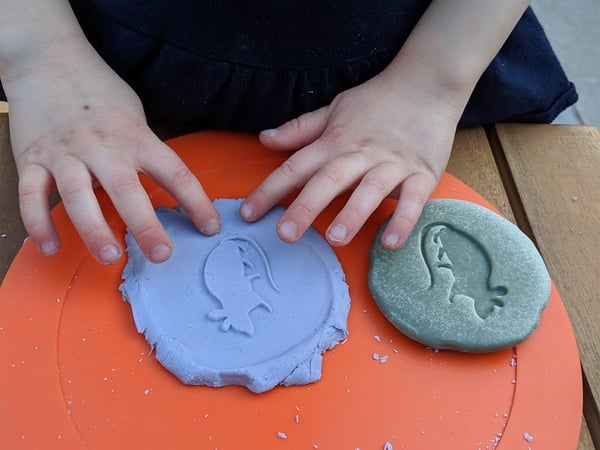
"The hands," wrote Dr. Maria Montessori, "are the instrument of man's intelligence." Squishing, rolling, sculpting, molding . . . young children love to play with playdough. Add some props from around the home and playdough play becomes a powerful way to support your child’s learning. This simple preschool staple lets children use their imaginations and strengthen the small muscles in their fingers—the same muscles they will one day use to hold a pencil and write.
Through manipulations, children develop eye-hand coordination, the ability to match hand movement with eye movement. They also gain strength and improve dexterity in their hands and fingers, critical areas of physical development for writing, drawing, using scissors, zipping zippers and buttoning buttons.
When children use this malleable material, they explore ideas and try different approaches until they find one that works. They compare and contrast objects ("Mine is a fat pancake and yours is skinny”), actions ("Let’s scrape it, like this”), and build connections with patterns, lines, and shapes ("We were making a snake, but now it looks like a really long road”). In their experimenting, children come up with their own ideas, satisfy their curiosity, and analyze problems.
Add sand or water to the playdough and then talk about how this new kind of dough looks and feels. Introduce words like texture, grainy, smooth, and lumpy. Your child might declare, "I’m making this flat!” as she pushes down on playdough with the palm of her hand. Or she may say, "I’m making it soft,” as she adds water to dry playdough to make it more pliable.
Make your own batch of playdough at home and see for yourself!
INGREDIENTS:

Montessori learners are beginning to understand the grace and courtesy associated with a handshake. At our morning group gathering, we go around the circle turning to our neighbor to offer our right hand (mostly) as a way to acknowledge each person’s presence with consciousness and compassion. They achieve a grip, make eye contact, and often smile before saying “good morning."
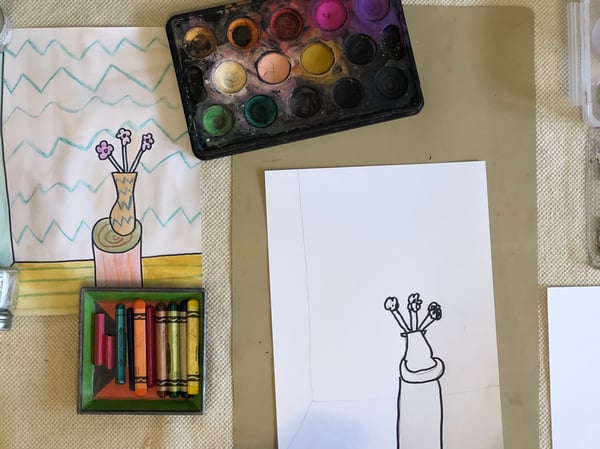
The Montessori learners are excited to explore different artists as well as different types of art. The learners focused on the French artist Henri Matisse, who was best known for his paintings and a new form of art he developed using paper and scissors when he was too ill to paint.
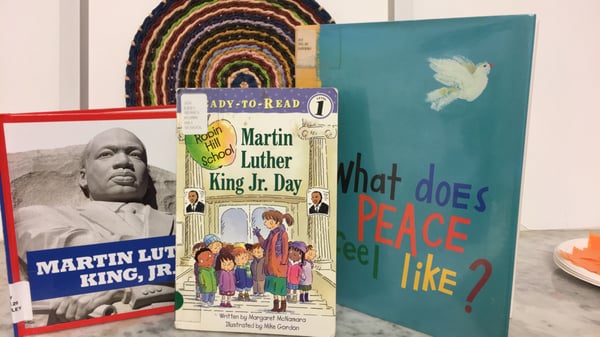
In honor of the Martin Luther King, Jr. holiday, we are reading books about King’s life and legacy. The holiday provides an opportunity to discuss concepts such as respect and kindness and to discuss how we like to be treated and how we should treat each other. Learners gave examples of ways they like and don’t like to be treated. One learner shared, “I like it when my friends ask me to play with them.” “Someone gave me a fluffy toy when I fell outside a hotel,” said another.
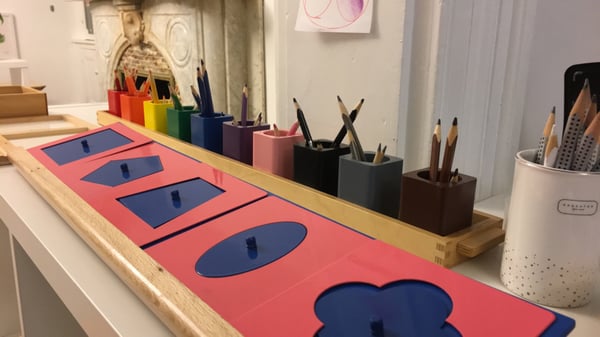
One of the fundamental aspects of the Montessori studio is the focus on order. The materials on the shelves are arranged in order from least to most complex, and work is stored in the same place (and, in some instances, in a particular sequence). From an outside perspective, the high value given to order might seem unusual or quaint. However, order is the basis for all the learning that happens in the studio. The child mentally absorbs his physical environment, and the physical environment helps a child organize her behaviors and her mind.
Order paves the way for a child to begin to focus and concentrate on activities in the classroom. When they know what to expect, where to find the materials that they need, and what is expected of them, children are freed to explore and can develop independence from adults.
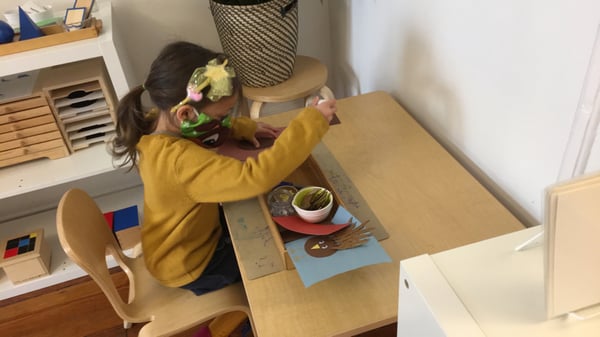
The beautiful foliage over the past few weeks has provided a wonderful opportunity for learners to notice the natural world and study leaves and trees. Learners have been examining the parts of a leaf, including the veins, blade, and petiole (the stem we can hold), and are identifying the shapes of different types of leaves, such as elm, oak, and ginkgo. Learners are practicing sorting leaves by color and matching similar shapes. Learners have also been examining types of bark and colors of wood from different trees. On the art shelf, learners are making leaf art with watercolors, leaf rubbings, and other materials. On the art shelf, learners are making leaf art, including painting with watercolors on leaf rubbings.
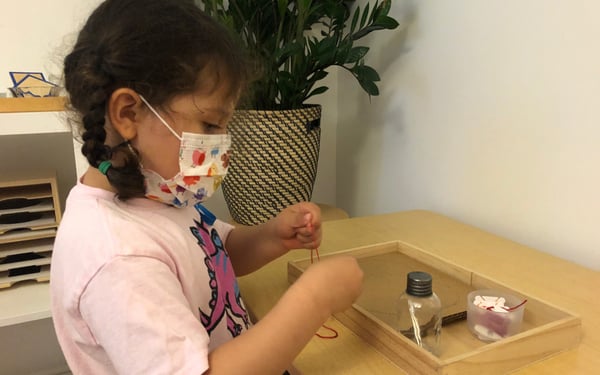
One of the main tasks the Montessori studio aims to accomplish is preparing a child’s hand for the task of writing. Writing requires a number of fine motor skills, including the strength and coordination of the thumb and first two fingers to hold the pencil securely in a ‘pincer grip’, the hand-to-eye coordination to trace visual or imagined shapes, and the flexibility of the wrist to move back and forth to allow for subtler movement in shaping letters and numbers.
Many materials and activities in the classroom are designed to strengthen these fine motor skills throughout the Montessori primary cycle. Introductory Montessori materials like the knobbed cylinders and puzzles have small knobs that require a child to form a pincer grip and lift weighted objects, strengthening those fingers in the process. The Practical Life area is full of opportunities for a child in the first year of Montessori to practice using small spoons and stiff tongs to transfer small objects, which also strengthen the fingers and hand-to-eye coordination. Young learners are also tracing sandpaper letters and numbers to start to get a kinetic feel for the shapes of the letters.
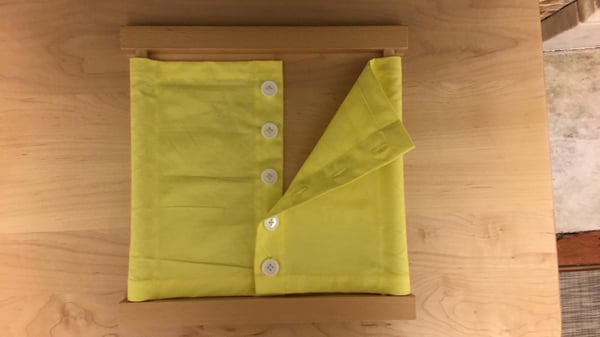
As we transition into fall, more jackets, hats, and mittens are appearing in the studio! As part of the Montessori Practical Life curriculum, young learners have opportunities to practice putting on their own coats, mittens, and hats before playing outside.
In the studio, Montessori “dressing frames” help learners practice these practical fine motor skills as part of the morning work cycle. There are dressing frames for zippers, small and large buttons, buckles, and laces. Over the three-year Montessori primary cycle, learners progressively master these different types of clothing fasteners, helping them to be more independent at home and school. The older learners also exercise their leadership and mentorship skills during transitions, as they love to help younger ones zip up and buckle up too.